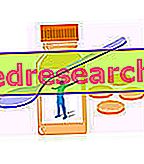
The first consumers of chewing gum were probably the ancient Greeks. In fact, the habit of chewing the dried resin of the "lentisco" plant, also called mastic tree ( Pistacia lentiscus L.), was widespread among the Hellenic people.
More than for the pure pleasure of doing it, the Greeks chewed this ancestor of chewingum to refresh their breath, but also to preserve the whiteness of their teeth and cure stomach pains and gum problems. Antibacterial, anti-diarrheal and antioxidant properties have also been demonstrated by modern science.
Today as then, the lentisk most suitable for the production of chewingum is that present in the Greek island of Chios, to which the volcanic nature of the subsoil gives particularly appreciated aromas, which give a feeling of freshness and cleanliness. Chios mastic is also suitable for other uses; always in dentistry, it is used in denture pastes, while in the food industry it is used to flavor wines and liqueurs.
While the Greeks appreciated the Chios, the Mayans of Central America chewed the "Chicle", given by the latex of the Sapotilla tree ( Manilkara zapota ).
The chicle represented one of the starting points for the production of modern chewingum, even if today these products mainly use synthetic compounds.



